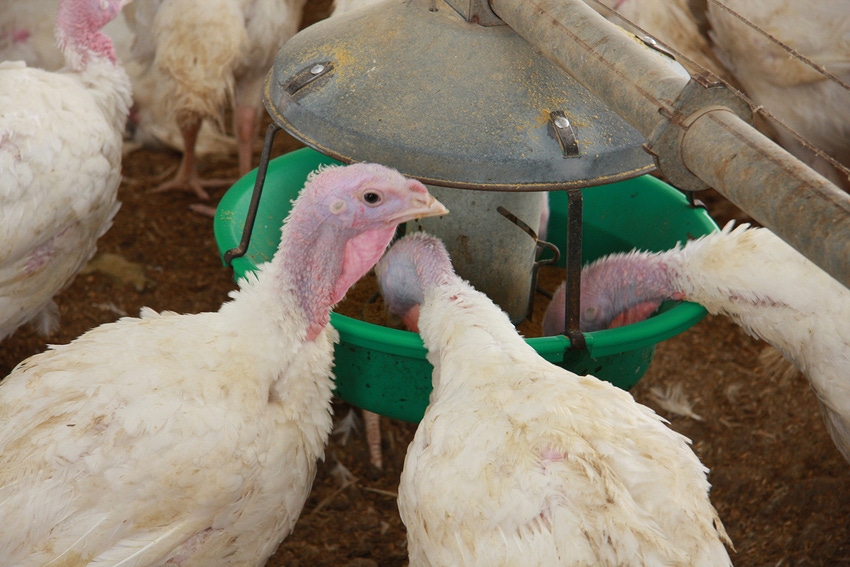While initial attention goes to the infected sites on quarantine, depopulation and disposal, the biggest job will be keeping negative herds in business as usual.

If you ask Bret Marsh, everyone in the livestock industry is in the ADR business. If you see an animal “ain’t doing right,” say something.
The Indiana state veterinarian knows a thing or two about ADR calls. He received quite a few of them in January 2016 when the highly pathogenic avian influenza H7N8 virus was found on a turkey farm in the southwest part of the state. In addition to the initial HPAI H7N8-infected farm, the low-pathogenicity avian influenza virus was identified in another nine nearby commercial flocks. More than 400,000 birds were affected in the outbreak.
“These viruses can percolate below pathogenic level and then mutate into high pathogenic and flow from farm to farm,” says Marsh. “I was hoping that we got in there early enough to detect those early sites.”
Early indeed, as the state was able to achieve AI-free status in just three-and-a-half months. While his experience with controlling an emerging infectious disease lies within the poultry sector, Marsh says there are many parallels the swine industry can draw from the event. The state veterinarian shared the experience this week with more than 700 pork industry members during the 29th annual Carthage Veterinary Service Swine Conference.
Immediately following that first ADR call and identifying that HPAI was identified on the Dubois County commercial turkey farm, a 6.2-mile control area and an additional 6.2-mile surveillance area was established. Poultry and poultry products could not enter or leave the control area without a negative avian influenza test and a permit issued by the Indiana State Board of Animal Health. Because the tests had to be completed within 24 hours of the movement, many commercial egg farms had to be tested daily to continue to move products.
During the control period, the Indiana Animal Disease Diagnostic Laboratory at Purdue University ran more than 4,300 avian influenza tests and the Indiana BOAH issued 55 different kinds of permits among the total 738 movement permits distributed during that time. Thirty-eight days later, after all farms had consistently tested negative, the BOAH was able to lift the control area.
“In hindsight, we feel we got ahead of this virus by testing neighboring farms the first day. The discovery of so many AI-positive sites — nine — in one day was unheard of, even at the height of the 2015 event,” says Marsh. “Our teams in the field had to scale-up, overnight. But we did it, and completed the task, in 38 days.”
While Marsh’s experience eradicating a disease was on the poultry side, he says there are some lessons pork industry members can take away from the case:
Plan for the biggest job. While initial attention goes to the infected sites on quarantine and depopulation and disposal, more time will need to be dedicated to the negative herds in the control and surveillance areas. How do uninfected pork production systems keep business as usual? This will involve getting premise identifications for all sites, sampling, testing, reporting and getting permits for movement.
Partner with the industry to plan. In addition to establishing premise identification for all sites, pork production systems need to make sure authorized testers are trained on how to collect and send samples to the laboratory. During an outbreak, biosecurity between farms will be heightened and state and federal agents are not going to be able to be on-farm to collect those samples. What extra personal protective equipment is needed for these testers? Is electronic reporting set up with the laboratory and what is the laboratory’s surge capacity for samples? What is their processing schedule for issuing permits?
Create a Secure Pork Supply plan. Have you designated someone as the biosecurity manager? Do you have a plan written for each site and trained all employees on the plan? Have you exercised the process for getting a movement permit for each site?
Have your own depopulation plan. Don’t get locked in on one solution. You may need alternative methods for euthanasia and disposal. Have a back-up plan for every site as weather or equipment failure could impede the process.
Preplan disposal options. Work with your state environmental agency to pre-identify viable options. Are burial, composting or incineration options? Be sure to communicate that plan to solid waste handlers.
Finally, Marsh encourages pork producers to have a face-to-face meeting with their state veterinarian before a foreign animal disease such as African swine fever reaches U.S. soil. It’s an additional step Marsh recognizes many producers across the country have already taken.
“In my years of dealing with animal health initiatives, I have not seen a heightened sense of awareness in any commodity like I’ve seen over the last year in the swine industry. It’s absolutely unprecedented and it provides opportunities for us to be better prepared,” Marsh says. “I’m reminded of the Army general at the start of the Iraq war almost 15 years or more ago, who was famous for saying, ‘if you find yourself in a fair fight, you didn’t plan your mission properly.’ I’m not looking for a fair fight and I don’t think that you are either.”
About the Author(s)
You May Also Like





